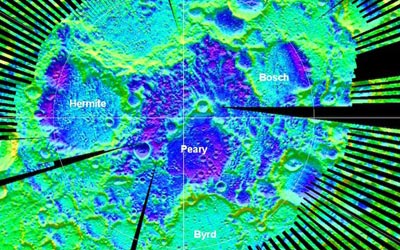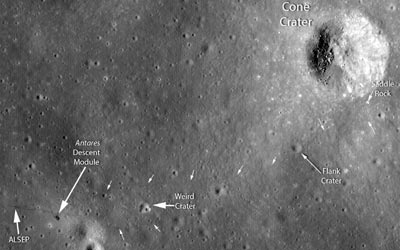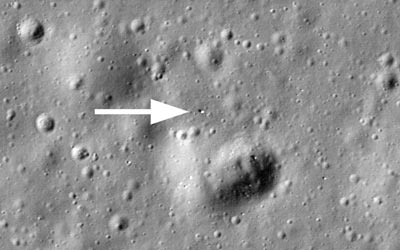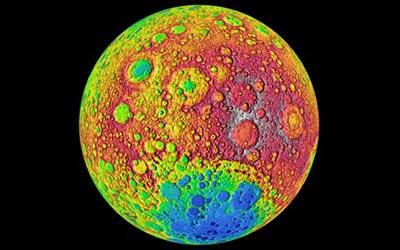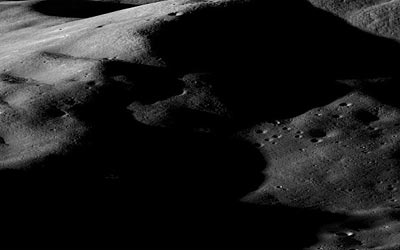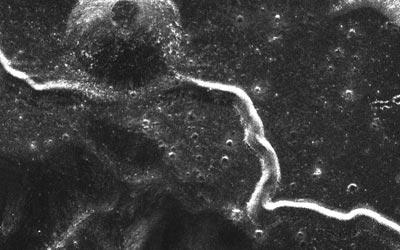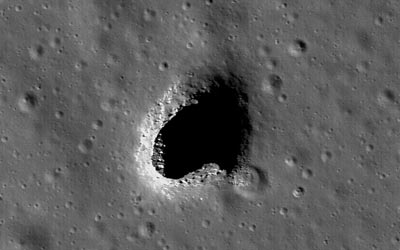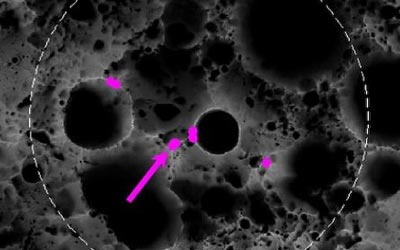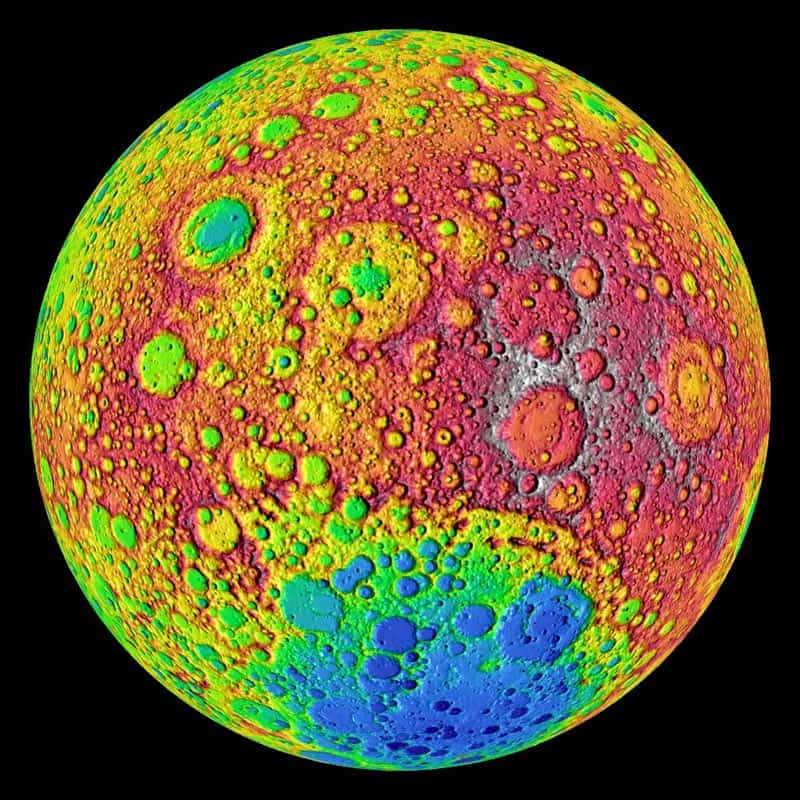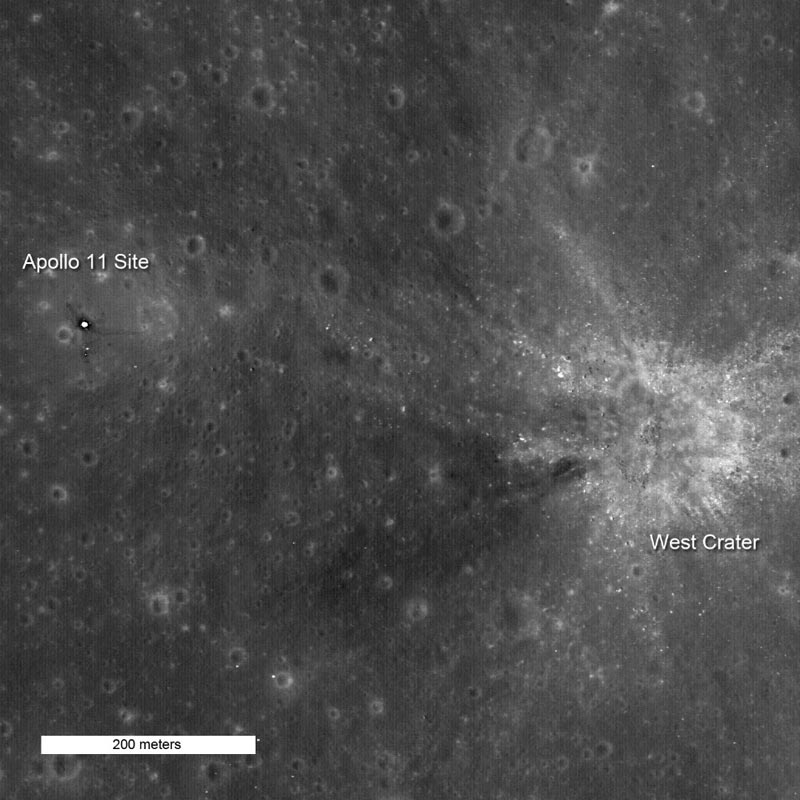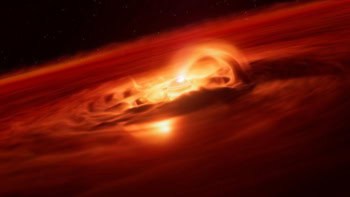
The Lunar Reconnaissance Orbiter (LRO) has been sweeping around the Moon for one full year, and to celebrate the occasion NASA has compiled a set of 10 images dubbed “cool things seen in the first year of LRO”.
The mission was launched on 19 June 2009 with the aim of gathering a variety of data on the lunar environment. It has seven on-board instruments, including a camera that can map the Moon with a resolution of about 50 cm. NASA hopes this will help in preparing for a new generation of longer-duration manned expeditions to the Moon.
The coolest image
The 10 selected images include the discovery of the coldest known place in the solar system. Diviner, LRO’s temperature instrument, located the site in the floor of the Moon’s Hermite crater and measured the temperature at –248 °C – 64° cooler than the surface of Pluto (the previous record-holder).
Another notable image is a view of the far side of the Moon. Although several spacecraft – including Japan’s SELENE mission – have already imaged the lunar far side, the LRO has looked more closely at the topography of this half of the Moon, which is entirely obscured from Earth. This side is rougher than the near side and has many more craters including one of the largest known impact craters in the solar system, the South Pole-Aitken Basin.
“The mission has gone very smoothly, with the LRO spacecraft performing flawlessly and all instruments meeting their success criteria,” Richard Vondrak, LRO project scientist at NASA’s Goddard Space Flight Center in Maryland, told physicsworld.com.
Three of the images are remnants from the space race. On the US side, the researchers discovered the first footsteps taken by Neil Armstrong and Buzz Aldrin and the route taken by the Apollo 14 astronauts who trekked to the rim of a cone crater. On the Russian side, the LRO spotted a Russian robotic that navigated 10 km over the lunar surface before it lost contact in September 1971.
Inspiring images
“I’d like to think that these pictures will finally convince the conspiracy theorists who claim that the Apollo missions were faked but I suppose they’ll just say that the LRO pictures are fake too – you can’t win,” says Marek Kukula, the public astronomer at the UK’s Royal Observatory Greenwich.
I’d like to think that these pictures will finally convince the conspiracy theorists who claim that the Apollo missions were faked but I suppose they’ll just say that the LRO pictures are fake too – you can’t win Marek Kukula, UK public astronomer
Kukula believes that all of the space agencies understand the need to disseminate their discoveries to the general public. “For a start, they’re publicly funded so they have a duty to tell taxpayers what they’re getting for their money,” he says. “And the excitement and adventure of space missions has a major role to play in inspiring young people to take up careers in science and engineering.”
LRO completes one year of its exploration mission in September, when it will then begin a two-year science mission. Vondrak says that his team plans to operate the spacecraft in a more robust manner with the hope of obtaining more oblique images of the Moon’s geological features and to obtain more information about the Moon’s atmosphere.
More information about these 10 images can be found here.
